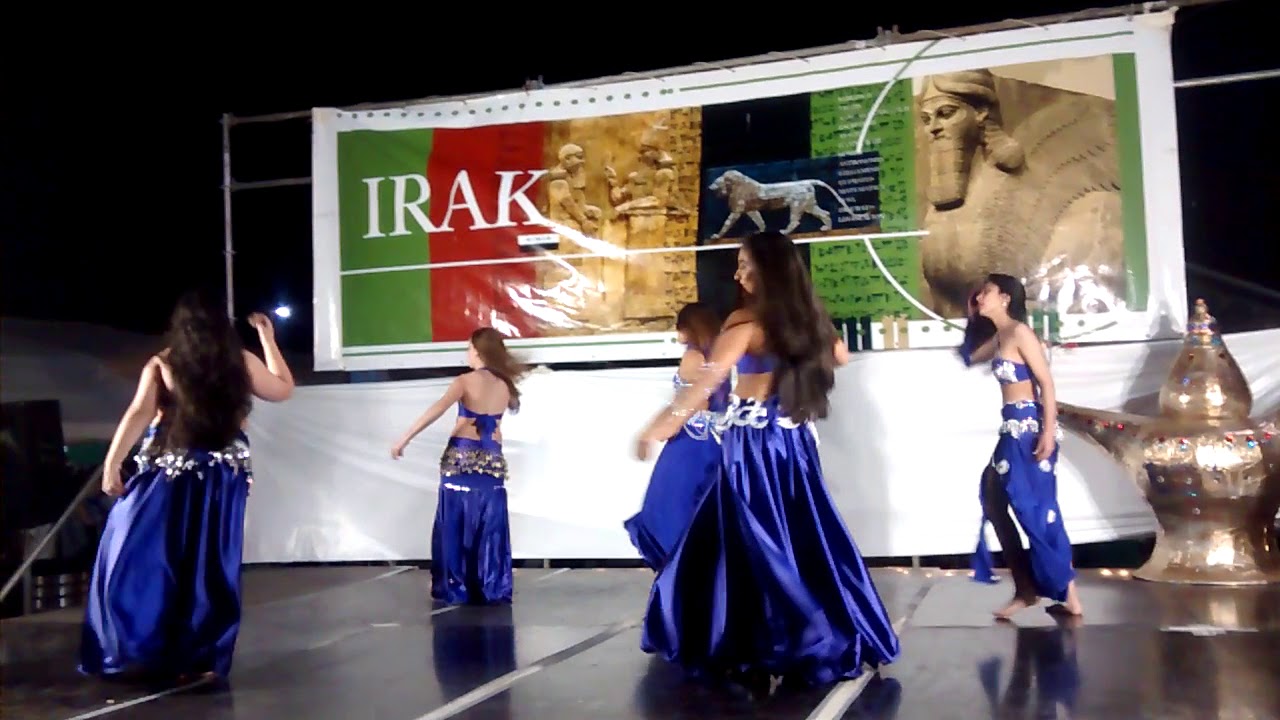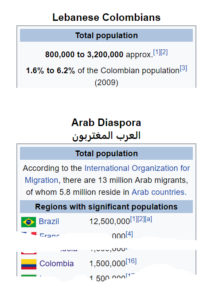Merry Christmas
Feliz Navidad
Feliz Natal
عَيد ميلاد مَجيد
Posted on YouTube: December 25, 2017
Argentina is a very large country on the southeast of South America, running from the polar south to the tropical north. The population is very European in ancestry, with roughly half being pure-European in background, and another large section being mostly European in background.
It has a large Arab population (9±%), but which is intermarried and assimilated into the country’s larger demographic This is because it is heavily Maronite (Catholic) Lebanese who assimilate well.
Interestingly, Argentina has around 180,000 Jews – the seventh largest Jewish population in the world – and they can be politically active.

Merry Christmas
Feliz Navidad
Feliz Natal
عَيد ميلاد مَجيد
Posted on YouTube: December 25, 2017
There is a demographic issue when accounting for the Arabs in Latin America. For an example: Look at this inconsistency for Colombia (image below).

Wikipedia estimated about 800,000 – 3.2 million Lebanese Colombians, out of approximately 50 million people in Colombia. Take a moment to let that enormous spread in estimated numbers sink in.
Now look at the second image. Notice that the Arab diaspora in Columbia is listed at 1.5 million.
Did you notice the contradiction? Lebanese-Colombians could be as high as 3.2 million, but another chart lists only 1.5 million Arab-Colombians.
How can there be more Lebanese-Columbians than Arab-Columbians, when the Lebanese are a subset of Arabs?
This is what makes checking the demographics of Arabs in the Western Hemisphere so hard. As is so often stated, the problem is that many Lebanese refuse to call themselves Arabs.
The number of Arabs in South America is much higher than official figures cite.
Similar inconsistencies crop up in Argentina and the United States. In Australia, the Lebanese do not even have to list their ancestry as Arab, but can cite Syriac (which is a language group, not necessarily Syrian) instead.
I suspect elsewhere as well.
The demographic contradictions stem from the reluctance of Lebanese Christians to identify as Arabs.
Lebanese Christians were horribly persecuted by the Muslims. In the nineteenth century, the French had to intervene in Lebanon to prevent a genocide of Christians by the Muslims. Many Lebanese Christians prefer to call themselves Phoenicians, by virtue of their ancient Phoenician past. Some will get rather indignant if you call them Arabs.
This has led to the odd situation where Lebanese are often considered completely different than Arabs.
Yet, upon arrival in any country, Lebanese Christians speak Arabic, eat Arabic food, and listen to Arabic music. The international community considers them Arabs.
Most of the Lebanese who immigrated to the West were from the Christian community. Muslims were less likely to leave. And, given that Maronite Christianity is affiliated with Roman Catholicism – the dominant religion in Latin America – Lebanese Maronites could seamlessly blend into Catholic communities in one generation. The first generation of kids would be indistinguishable from other Latins.
Complicating the matter, Lebanese Christians, primarily the Maronite Christians, have a portion of European DNA, as a result of their ancestors having intermarried with Europeans Crusaders. In plain terms, they are sometimes slightly whiter than other Arabs, and can often pass for Europeans. In Latin America, whites are often the elite, and Maronites would have had that advantage.
Muslims did immigrate to Latin America, but in smaller numbers, and often decades later, long after the Maronites blended in.
Mixing things up further, Muslim Lebanese certainly consider themselves to be Arabs. So ironically the Muslim-Lebanese would classify themselves as Arabs – in contravention to the Christians – primarily the Maronite Christians – who consider themselves to be Phoenician, not Arabic.
Historically, the Lebanese Christians, who refuse to identify as Arabs, were also determined to blend in, assimilate, and intermarry rather rapidly. So if they are under-reported, it is because they assimilated so well. The Lebanese Christians are a large almost invisible community.
The migration of Lebanese Christians to the Americas was rather large, and the result is that glaring inconsistencies in demographics can occur. Hence the number of Arabs in any country in the Western Hemisphere is grossly under-reported.
Thankfully, this is not a problem for anyone, but demographers.
Take for example: Julio César Turbay. He was the 25th president of Colombia, and was half-Lebanese. The product of assimilation and intermarriage.
This curiosity has to be noted.
February 3, 2018 – Edited: Grammatical error.
July 17, 2020 – Edited: Added image. Added and edited text.

Published on YouTube: Oct 27, 2017
Their Facebook site: (Click Here)
Published on YouTube: June 11, 2017
Argentina is about 9% Arab, mostly Christian; but they are a cultural force.